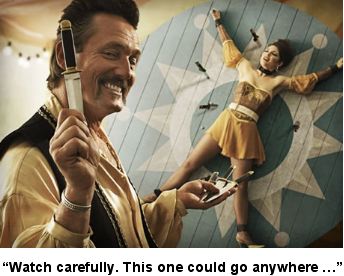3. Character Point of View
| |
(v) SWITCHING POINT OF VIEW |
Switching point of view suddenly from one character to another is easy with a chapter or section break, but it can be dislocating in continuous text. It’s a jolt for readers who think they’re still sharing one character’s experience to find themselves pitched into the mind of another.
A point of view doesn’t disappear the moment it’s no longer explicitly sourced to a particular character. Once the author has conveyed the idea that this is, say, Trudy’s experience, readers will continue to understand everything as coming through her. It’s necessary to withdraw from the old point of view before moving into a new one.
Different levels of point of view are important here. If we’ve been sharing Trudy’s inner thoughts and memories of the past, it’ll be a huge jolt to flip across into Zoë’s point of view. It’ll be less of a jolt if we’ve been sharing perceptions that were sourced to Trudy, but which Zoë might have experienced too. The deeper the immersion, the harder to withdraw.
Making a switch smoothly takes time. You need a lot of non-Trudy material before the reader will stop assuming her perspective. Dialogue is especially useful here, because dialogue is ‘public’ and not personalised to any individual point of view.
Once you’ve reached the level where perceptions seem to belong equally to all characters in the scene—the dripping water, the unpleasant smell—then you’re ready to start moving off into into a different character’s experience.
There’s also line of sight. In film terms, this means, roughly, that the camera turns to what the  audience wants to see. One character throws a knife and we’re immediately curious about where it ends up—in the chest of a different character, perhaps. Or one character calls out an urgent question, and the camera swings with our attention to focus on the questionee. audience wants to see. One character throws a knife and we’re immediately curious about where it ends up—in the chest of a different character, perhaps. Or one character calls out an urgent question, and the camera swings with our attention to focus on the questionee.
Similarly with point of view in a novel. Switching into the mind of a character who’s just passively standing around is liable to seem arbitrary. It’s much more natural if Trudy, who has been the POV character, shouts ‘Check the corridor!’ to Will, and hands him the torch … then, following the action, we accompany Will as he explores the corridor, and slip gradually into his point of view.
In popular fiction, action directs attention and attention can influence point of view.
|





